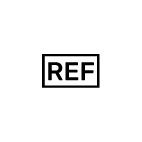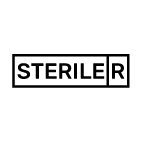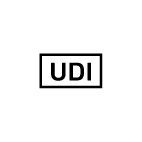English / Turkish
Table of Contents
- The Name or Trade Name of The Medical Device
- The Name and The Address of The Manufacturer
- Product Content List
- Intended Use of The Product
- Possible Contraindicative Situations
- Patient Profile
- The Performance of The Device Intended by The Manufacturer
- Possible Adverse Events
- User Profile
- Medical Devices To Be Used With The Device
- Procedure
- Storage, Shelf Life and Handling Information
- Precautions, Warnings, Measures to Be Taken and Limitations
- Symbols and Explanations
The Name or Trade Name of The Medical Device
PRP TUBES
The product is a sterile, single use medical device.
The Name and The Address of The Manufacturer
T-Biyoteknoloji Laboratuvar Estetik Medikal Kozmetik San. Tic. Ltd. Şti.
Tahtalı Mah. Değirmen Yolu (460) Sk. No:10 Nilüfer / Bursa / Turkey
Phone: +90 224 246 8522
E-mail: info@tlab.com.tr
Manufacturer ID No (SRN): TR-MF-000016403
Product Content List
- 2 units of PRP Tube(s)
Intended Use of The Product
The device is designed to be used for the safe and rapid preparation of autologous platelet-rich-plasma (PRP) from a small sample of blood at the patient’s point of care. The PRP is prepared prior to application to a local area of soft tissue or hard tissue (including bone) site as deemed necessary by the clinical use requirements. And its intended use is for the application of PRP in order to achieve the stimulation of soft tissue and hard tissue (including bone) and acceleration of soft tissue and hard tissue (including bone) healing.
Possible Contraindicative Situations
- Platelet Dysfunction Syndrome
- Critical Thrombocytopaenia
- Hypofibrinogenaemia
- Hemodynamic instability
- Auto-immune diseases
- Malignancy
- Sepsis
- Acute Chronic infections
- Chronic Liver Pathology
- Anti-coagulation Therapy (ASA therapy etc.)
- Pregnancy (for cosmetic indications)
- Newborns
Patient Profile
Platelet rich plasma is an autologous application technique and it is used on the same patient. Due to this information, platelet-rich plasma applications are inherently safe from infectious diseases such as HIV, Hepatitis, Creutzfeldt-Jakob disease.
As an autologous technique; however, Platelet-Rich Plasma can be used safe and effectively to all patients, there may have a need for further studies on pregnant and newborns.
The Performance of The Device Intended by The Manufacturer
PRP (Platelet Rich Plasma) is used for many years in the frame of regenerative medicine, which allows the cellular healing on bone and soft tissue recovery. Bone and soft tissue healing is occurred by the platelet concentration and re-injection locally to the related part of the body.
Concentration of platelets is very crucial for PRP treatments. Currently accepted technique for avoiding coagulation of the whole blood, referred to Sodium Citrate. The procedure uses anticoagulated blood, collected by routine phlebotomy. Anticoagulation is achieved by gently mixing whole blood with 3.20% concentration of Sodium Citrate at 0.1M. This preparation is then centrifuged to obtain the PRP. The suggested G Force for PRP can be found in the "Procedure" section depending on the centrifuge types.
The blood separation system takes the advantage of centrifugational force effecting on the weight of the cells. The separation occurs during centrifugation when the denser blood components move due to a gravity force.
PRP TUBES shall not be mixed after the centrifugation. The centrifuge rotor used and the PRP section on the erythrocytes (Red Blood Cells) are thoroughly collected according to the desired protocol.
The result is a convenient system, collection of the whole blood and concentration of Platelet Rich Plasma. PRP Tubes are interior sterilized using irradiation. PRP TUBES reduces the risk of air contamination, eliminates the need of any other tubes or pipettes.
Possible Adverse Events
- Damage to blood vessels, hematoma / delayed wound healing and/or infection associated with blood draw.
- Temporary or permanent nerve damage that may result in pain or numbness.
- Early or late postoperative infection.
User Profile
This product should be used by physicians or physician-directed allied health care professionals with adequate training in the use of the device.
Medical Devices to Be Used with The Device
- Blood Collection Needle / Phlebotomy Set / Butterfly Set
- Phlebotomy set / butterfly set / blood collection needle shall not be thinner than 21G.
- Centrifuge
- The centrifuge should be set as specified in the “Procedure” section.
- PRP TUBES have dimensions of 16X100 mm. Centrifuge bucket shall be selected accordingly.
- Place the tubes in the centrifuge so that they are of equal weight.
- Avoid using unbalanced centrifugal devices.
- Long Needle and Syringe
- Long needle shall be 88mm-90mm 18G-19G.
- Long needle used to collect PRP layer from the tube is not intended to be used for the injection procedure.
- Syringe used to collect the PRP layer shall have a a minimum capacity of 4ml and be a luerlocked model.
Procedure
Apply the following instructions to obtain Platelet Rich Plasma by using PRP TUBES:
- Open the box.
- Open the blister package.
- Apply the blood collection device to sanitized part of the patient’s arm. (Venous)
- PRP TUBES is a vacuumed tube. The tube collects enough amount of blood and stops itself. Apply both tubes, without removing the needle from the vessel.
- Centrifuge both tubes in a centrifuge according to the procedures outlined below. (The doctor must choose the procedure).
|
|
Fixed Rotor Centrifuge |
Swing Rotor Centrifuge |
| Pure PRP Protocol |
500 RCF & 3 Minute |
1150 RCF & 4 Minute |
| Amber PRP Protocol |
500 RCF & 6 Minute |
1150 RCF & 8 Minute |
|
500 RCF=2000 RPM, 1150 RCF=2900 RPM |
||
AMBER PRP: LR-PRP (Leukocyte Rich PRP)
PURE PRP: LP-PRP (Leukocyte Poor PRP)
- Centrifuge buckets shall be compatible with 16 X 100 mm PRP TUBES
- Attach a long needle to 5 ml Luer-lok Syringe.
- Collect the PRP above the RBC layer by inserting a long needle into PRP TUBES without opening the lid unless performed under laminar flow conditions.
- After the Pure PRP Protocol, collect all the plasma above the erythrocyte layer
- After the Amber PRP Protocol, collect the buffy coat and 2 ml on the erythrocyte layer.
- Carefully collect the PRP according to the selected protocol
- Apply the same protocol for the second tube of PRP TUBES.
- Apply the injection method to the patient.
Storage, Shelf Life and Handling Information
- Do not expose to direct sunlight.
- Do not use if the inner blister package is damaged or opened.
- Shelf life (Product Lifecycle) is the expiration date on the label.
- Storage temperature is between 5°C and 30°C
Precautions, Warnings, Measures to Be Taken and Limitations
- Use proper safety precautions to guard against needle sticks.
- Follow manufacturer’s instructions when using centrifuge.
- Do not use if the inner blister package is damaged or opened.
- Do not open the lids of the tubes.
- Single use device, do not reuse.
- The user should be thoroughly familiar with the equipment and the surgical procedure prior to using this device.
- The patient should be made aware of general risks associated with treatment and possible adverse effects.
- Do not dispose of this product in the unsorted municipal waste stream.
- Long Needle is not intended to be used on patients. It is intended to be used only to collect PRP layer from PRP TUBES.
Symbols and Explanations

European Medical Devices Directive
Notified Body: Szutest (2195)

Manufacturer

Country of Manufacture & Date of Manufacture

Catalogue Number

Batch Code

Use by date

Medical Device

Sterilized Using Irradiation

Sterilized Using Ethylene Oxide

Do Not Re-sterilize

Do Not Use if Package is Damaged

Keep Away from Sunlight

Non-Pyrogenic

Unique Device Identifier

Keep Dry

Temperature Limit

Do Not Reuse

Consult instructions for use or consult electronic instructions for use

Caution

Single Sterile Barrier System
TF03.02.IFU.R03 | Release Date: 09.05.2022 | Revision Date: 18.09.2023